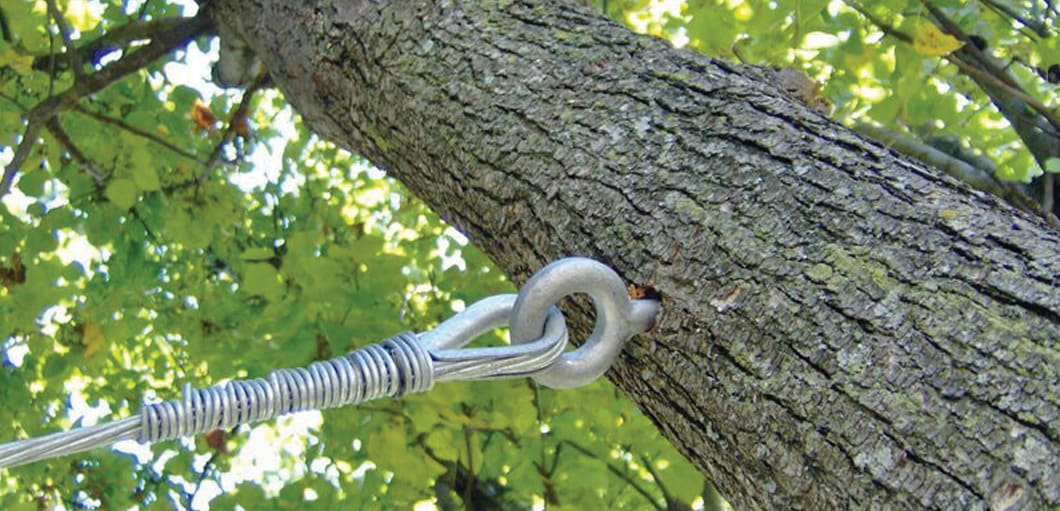Understanding the Benefits and Drawbacks
Cabling and bracing are techniques used by arborists to provide structural support for trees. These methods involve installing hardware to strengthen weak or damaged branches or trunks. In this article, we will discuss the advantages and disadvantages of cabling and bracing trees, helping you understand when and why these practices are beneficial.
Advantages of
Structural Support: Cabling and bracing help strengthen trees with multiple trunks, heavy limbs, or damage from storms or disease. By redistributing the weight, these techniques improve the overall stability of the tree.
Hazard Mitigation: Cabling and bracing reduce the risk of tree failure during severe weather conditions. Reinforcing weak or hazardous limbs enhances safety in areas where trees are near structures or high-traffic areas.
Preservation of Valuable Trees: Cabling and bracing can extend the life of valuable or historically significant trees. This allows future generations to enjoy their beauty and benefits, especially with mature or heritage trees.
Disadvantages of:
Limitations and Effectiveness: Cabling and bracing may not be suitable for all tree issues. Success depends on factors like tree health, severity of the problem, and quality of installation. In some cases, these techniques may not be effective or necessary.
Ongoing Maintenance: Cabled and braced trees require regular inspections and maintenance. Adjustments or replacements may be needed as the tree grows. Neglecting maintenance can compromise the support system’s effectiveness.
Aesthetics and Tree Health: The visible hardware used in cabling and bracing can impact the tree’s appearance. Installation may involve drilling, which could introduce pathogens or weaken the tree if not done properly. Care must be taken to minimize any negative impacts.
Cabling and bracing provide structural support, hazard mitigation, and preservation of valuable trees. However, it’s important to consider limitations and potential drawbacks. Consulting a certified arborist is essential to assess your tree’s specific needs and determine if cabling and bracing are appropriate. Evaluating the tree’s health, structural integrity, and overall context will help you make an informed decision, ensuring the long-term health, safety, and aesthetic appeal of your trees.




